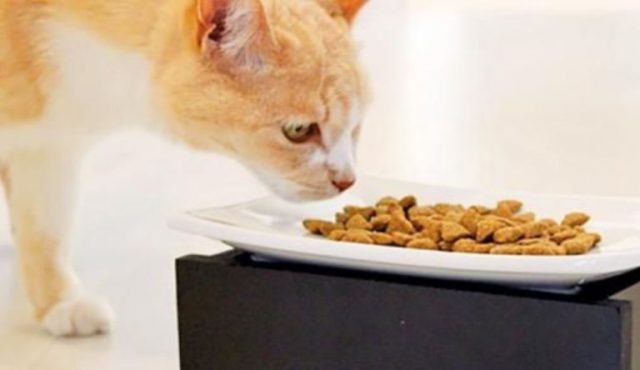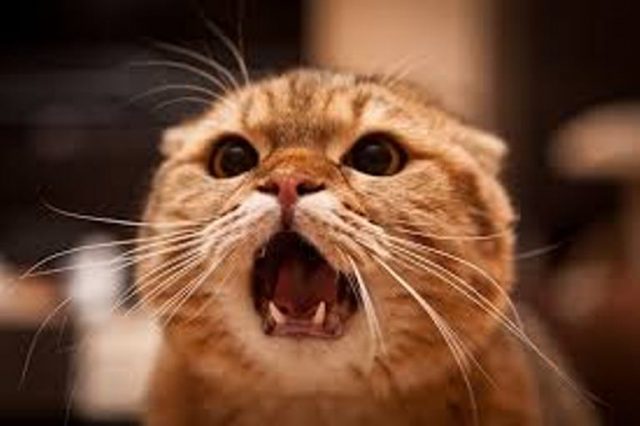While pondering on the chances of your cat suffering whiskers fatigue, ask yourself if you have ever been dragged to the kitchen by your four-legged buddy who announces in that peculiar impeccable feline language that it is hungry but will still refuse to settle down and eat what you put down. Alternatively, some cats just nudge their food from the bowl to the floor and proceed to eat off the floor. There are still some that leave you with a big mess after mealtime and a handful that will be at war with other household pets during meals – as if they are announcing, “ if I am not able to eat, then no other cat will.”
Deciding that it could be the cat’s mealtime behavior may be far from the truth. Perhaps this crabbiness might have another explanation apart from some character disorder. You should consider a concept like whiskers fatigue; though it is somewhat new and is yet to have the backing of experts, there is enough evidence suggesting that it is very real.
Table of Contents
What Are Whiskers?
Whiskers are those thick hairs sticking out from the checks of our feline friends, their chins, the spots above their two eyes, and behind their fore-limbs. These hairs are equipped with some sensory gathering nerves charged with the responsibility of collating info about vibrations, objects, as well as wind currents in the kitty’s vicinity. They are an essential part of a cat’s communication system and boost its natural hunting ability in the darkness.
These little sensitive antennas collect, as well as send info to a cat’s brain, and it is thanks to them that the cat can be so perceptive in the dark. The sensitivity of the whiskers, also called vibrissae, is so much that any subtle change in both pressure and movement can be easily detected by the feline population. This way, the cat stays clear of potential danger, moving away from any marauding predator.
What Exactly Is Whiskers Fatigue?
When these extra sensitive whiskers are repeatedly brushed against things, the cat tends to feel some pain and discomfort. A good example is when the cat’s water or food bowl frequently comes in contact with the whiskers – drinking and eating will become stressful.
Whiskers stress, as it is also called is a concept that is somewhat new and also controversial. The claim is yet to be validated by any studies; thus, experts still hesitate to agree with the concept. Even in the absence of supporting research for whiskers stress, several cat adopters had reported that their furry friends go through whiskers fatigue and that they observed an improved eating habit when they took steps to change the feeding method for the cats.
This idea of whiskers fatigue will begin to make more sense if we frequently touch some very sensitive spots on our bodies. It can cause weariness at that spot, which may turn into stress. In the same vein, a cat can constantly get stimulated whenever its extremely responsive face antennas are brushed when it comes into contact with the water or food bowl – this can be painful and stressful, resulting in whiskers fatigue.
What Are Whiskers Used For
Being anchored to a bed of nerves responsible for assisting the kitty in navigating its world, the vibrissae can be used for a plethora of purposes.
- Adjust in limited spaces
- Comprehend its surroundings in low light
- It aids the feline from jumping by providing it with its own visual metering system
- Alerts the cat to take action by picking up on the slightest changes in the atmosphere
- Aids the kitty in delivering lethal blows by deciphering the exact position of its prey
- It triggers the cat’s blink reflexes, thereby protecting its eyes
- Assists them in communicating with humans and other members of the feline population
Symptoms Your Feline Might Be Having Whiskers Fatigue
If your furry friend is displaying one or more of these symptoms, then chances are that it might be experiencing whiskers fatigue;
- Pawing at its food or pulling same from the bowl to the ground where it can eat more comfortably
- While drinking or eating, the cat tends to leave a great mess behind, especially around its food bowl
- Continues to behave like it is still hungry when enough food is left in the bowl
- Approaching its food cautiously, behaving like it would love to eat but would prefer to first pace nervously around
- Rejecting the food bowl when it isn’t filled to the brim, and making constant demands that you fill its bowl to the top
- Displaying aggressive behavior towards people and fellow household pets during mealtimes
How To Prevent Whiskers Fatigue

If any of the aforementioned symptoms have been observed in your furball but serious health issues have been ruled out, and the prime suspect is whiskers fatigue, then, the time has come to change certain things like the kitty’s water and food bowls. Your best option is to get a mat, a small flat plate, or another bowl with lower edges. Once the cat starts eating with this kind of bowl, watch out to see if those symptoms will go away. If they do dissipate, the culprit must be whiskers fatigue.
Remember the water bowl while dealing with whiskers’ stress. A good number of kitties would prefer that their water source comes from any flowing water source that is fresh, and this can be achieved by constructing a form of a feline water fountain – this is quite great for every cat.
There are cat pet parents who believe that trimming their fur baby’s whiskers is one way of solving whiskers stress. However, this is not recommended. When you trim a feline’s whiskers, you have only succeeded in dimming its perception, annoying the cat, and muting its expression. Generally, whiskers trimming discombobulates cats.
Read Also: Almond Milk For Cats: Can Cats Drink Almond Milk?
The Anatomy Of Feline Whiskers
As pet parents, we are often ignorant of the anatomy of our feline’s whiskers. Many see it as an ordinary physical attribute similar to a human’s facial hair. However, feline whiskers are more complex than you might be thinking. Those whiskers function as coarse touch receptors reaching deep under the cat’s skin to link up with its nervous system.
While it is believed that the cats may not really have feelings in those whiskers, any touch or movement affecting them transmits signals to the kitty’s sensory system and brain. So, those hairs actually function as antennae that constantly gather vital info about your kitty’s world like how close the cat is to the nearest wall, the direction of the wind, and if they are in a dangerous situation.
